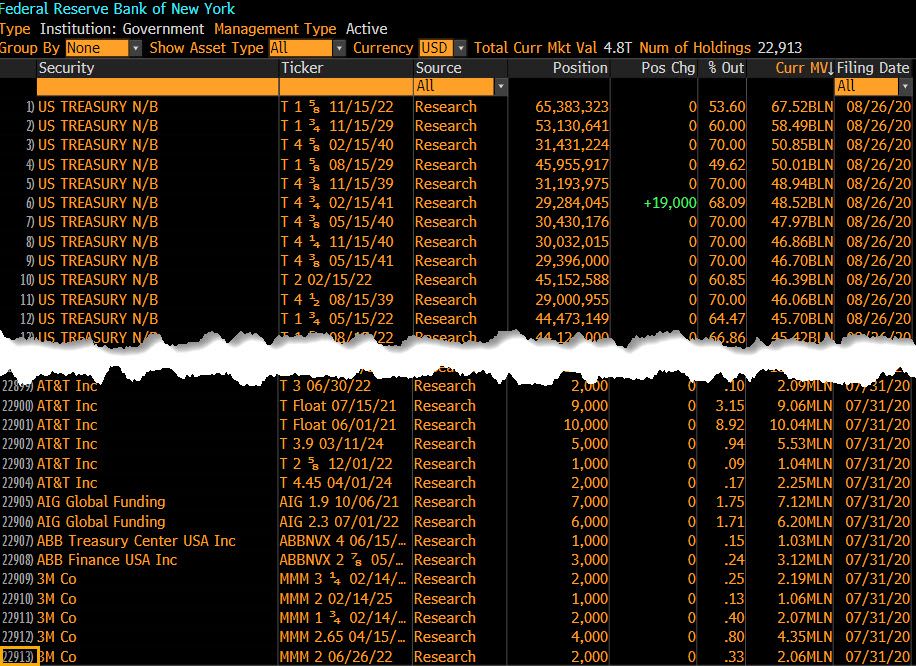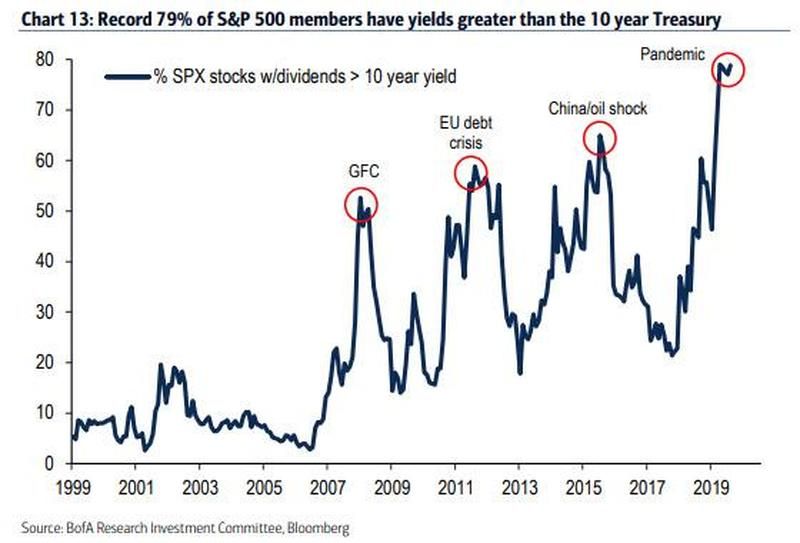The Federal Reserve has hit a new milestone in the race to have the largest balance sheet in the world. The American central bank has gone full berserk in 2020 and is printing dollars non-stop.
Using the COVID-19 crisis and the global lockdown effects in the economy as an excuse, the Fed has purchased so many assets lately that it has become the biggest investor on the planet.
Is this a sustainable strategy? And if not, how long can the party go on until the markets realize that all fiat money is a charade?
SponsoredThe Federal Reserve: World’s Biggest Investor
When asked the question ‘Who is the largest investor in the world?’ many would probably answer someone like Rockefeller or Rothschild. Maybe some who are more financially savvy would name a few major investment funds.
The right answer is none of the above.
The Federal Reserve of America is currently the biggest investor on planet Earth with a total of 22,913 different securities, according to Bloomberg.

Corporate bonds are still a mere $5 billion of the total though. The Fed’s balance sheet is still mostly built upon treasuries and mortgage-backed securities. The question is, how much of the current prices of large-cap assets like Tesla or Apple are just part of the Fed’s pump?
The Fed’s strategy is simple: keeping the dollar alive. It can print as many dollars as it wants, and now with the COVID-19 pandemic and the current social instability in the United States, not many are checking where these dollars are going.
Sponsored SponsoredThe money is rarely reaching the pockets of the citizens or main street small businesses. Most of the freshly baked fiat is funneled directly into the stock market.
A Desperate Need for Inflation
Central banks love inflation—just not too much or too little. The Federal Reserve constantly prints money, which has maintained inflation around the magic level of 2%, a number normally considered sustainable by major central banks.
This system allows governments to get further indebted, as constant inflation makes it easier to repay the national debt. Because inflation reduces purchasing power, big investors have been moving their liquidity from bonds to stocks—and the Federal Reserve has done so too.
SponsoredThis is such an important chart. Central bankers are trying like hell to create “inflation” and all the liquidity is just further nesting itself into asset prices (now nonlinearly). It’s so obvious, yet many try to make it more complicated than it needs to be. https://t.co/h4lt31kuiz
— Preston Pysh (@PrestonPysh) August 30, 2020
As Preston Pysh, cofounder of the Investor’s Podcast Network points out, we’re reaching a tipping point with inflation.
We have more and more money coming into the economy, but bigger portions of it are just going to assets like stocks, bonds, precious metals, and cryptocurrency.
How Long Can This Last?
This money printing strategy has been going on for decades, but since the Great Financial Crisis of 2008, it has accelerated.
One of the direct consequences of this influx of money is that stock markets are posting record yields compared to 10-year treasuries:
Sponsored Sponsored
Many financial analysts are already asking for a change in policy. Bank of America’s Research Investment Committee analyst Jared Woodard says:
Stagnant GDP, deepening inequality, and the threat of policy failure make us bullish on the things we don’t want to buy (growth, large caps, US) and bearish on the things we want to own (value, small caps, EAFE) because, without an economic transformation, any reversal in the ranks of market winners & losers can only last a season.
The Fed’s policy of printing and buying raises ethical concerns. The Federal Reserve can print all the money it wants, and it can also buy any and all securities without question. That gives it unprecedented power to pump and/or dump whatever asset at will.
While this strengthens the case for Bitcoin with its encoded scarcity, how much of it is on the balance sheets of the central banks of the world? Is Tether the money printing trojan horse of the Fed inside the cryptocurrency industry?
Investors should keep an eye on the constant developments around the Federal Reserve’s policies on inflation. Perhaps, part of the recent bull market is merely a consequence of having more dollars around, rather than a healthy uptrend in the price of digital hard assets.

